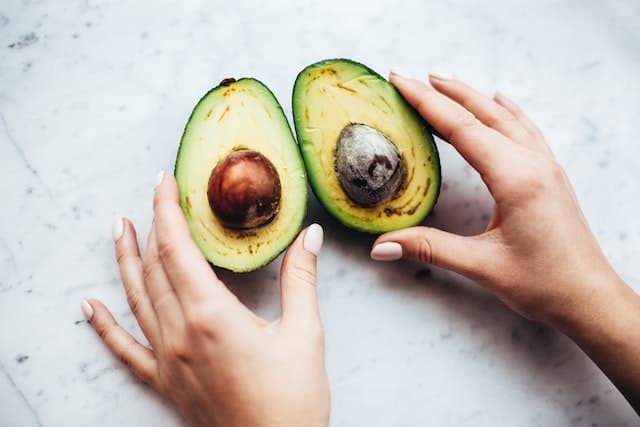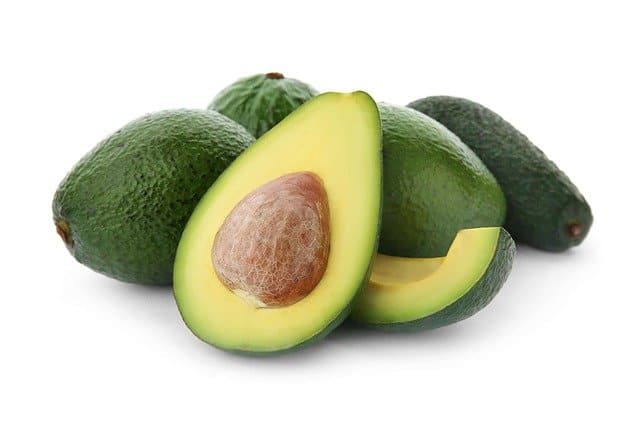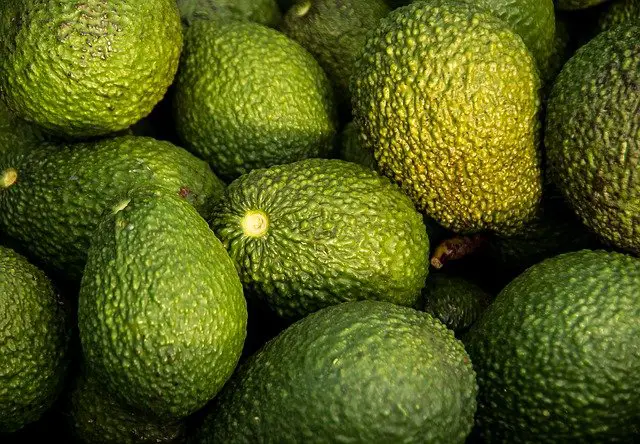Little slices of avocado in a bowl of salad make up a highly nutritious and tasty meal. Also known as butter fruit or alligator pear, avocados can help to improve digestion, heart function, vision, and blood pressure.
Despite its amazing benefits, the butter fruit can sometimes get moldy. But what does mold on avocado pit mean?
What Does Mold On Avocado Pit Mean

Mold on the avocado pit is one of the signs that the fruit has gone bad. Most of the time, the moldy pit feels soft to the touch and can have a foul smell.
Sometimes, the decay can start from the skin of the fruit to the pit. While the mold can be on a part of the fruit, it may quickly spread to the other parts.
Apart from a moldy pit, what are the other signs that avocado is gradually decaying? Keep on reading this article to find out the answer to this question and other important details about avocados.
Now, let’s get started!
What Are The Signs That An Avocado Is Bad?
While several signs can predict that avocado is no longer good, we will be discussing 5 of them.
1. Deep Black Skin
From the outer part, it is easy to determine whether an avocado is good or not. While there are many varieties of avocado, most of them generally have dark green to purplish-black skin.
But when the avocado skin is deep black and feels very soft to touch, it is probably bad. Note that some varieties can remain green and look fresh even when they’re overripe. So, unless you lightly press these butter fruits, you might not notice they’re bad.
2. Extremely Soft Skin

Usually, a ripe avocado will feel soft but not too soft when you press it. On the other hand, an unripe avocado will be hard when you touch it. But if, after squeezing an avocado, you notice it feels sloshy, the fruit is no longer good for consumption.
Another sign you’ll notice is that a large dent will form even though you slightly pressed the fruit. Sometimes, an extremely soft avocado can be safe to consume if it is not rotten.
3. Brown Spots On The Flesh
Another way to find out whether an avocado is good or bad is to cut it open. Normally, the color of good avocado flesh is light green. But if you notice brown or black spots and dark marks all over the flesh, the fruit has probably gone bad.
Bear in mind that bruising can also cause brown spots or dark marks to appear on the avocado flesh. In other words, not all avocados with unusual marks are bad. Feel free to eat the fruit if the skin feels moderately soft and the flesh doesn’t look rotten.
4. Unpleasant Odor
Generally, ripe avocados have a sweet smell and flavor, which is why people add them to salads and smoothies. But when the fruit starts to decay, its sweet smell will turn into an unpleasant one.
Sometimes, you may perceive the smell of a bad avocado before cutting it open. When you notice this sign, discard the fruit.
5. Sour Taste
If you’re not sure that avocado is bad after observing, touching, and smelling it, you can taste it. Take a small part of the flesh that doesn’t have spots or mold and eat it.
Commonly, avocados have a mild, creamy, sweet, and buttery taste. On the contrary, a bad or rotten avocado will have a sour or bitter taste. This is all the evidence you need to confirm whether the fruit should go to the bin or not.
Causes Of Mold On Avocado Pit
Several factors can cause mold to appear on avocado pits. Let’s take a look at some of the most common ones.
1. Poor Storage
Storing avocados in damp places, including plastic bags, can expose the pits to mold. Also, if you keep these fruits in warm environments, there’s a high chance that mold will begin to appear on their pits.
Therefore, avoid keeping your avocados in places where fresh air cannot circulate, such as containers with tight covers.
2. Moisture
If an avocado pit is exposed to excess moisture, it will create an environment for mold to grow. If you place these fruits in a place with little or no ventilation, mold will start developing on them.
And in a case where you did not wipe water residue from the avocados properly, mold will likely appear on the pits.
3. Late Consumption
Unlike oranges and apples, avocados only stay fresh and edible for a short time. Leaving these fruits for a long period of time can expose them to the risk of moldy pits.
As avocados become ripe, they tend to become mushy, thereby creating an environment for mold to thrive. There are simple ways to prevent your avocados from becoming overripe and decaying.
How To Prevent Molds In Avocado Pit

When next you buy one of these butter fruits, eat it as fast as possible. However, you can store the avocado if you’re not eating it immediately.
Mostly, avocados spoil within a few days after they’ve been plucked from the trees. So you need to keep the fruit fresh for as long as when you’re ready to eat it.
Here are simple ways to preserve your avocados:
- Leave unripe avocados on the table for about 4 to 5 days and keep observing them every day. Make sure the fruits are not in a place where they can get direct sunlight.
- Place ripe avocados in an air-tight container and store them in the refrigerator for some days to keep them fresh. Avoid placing the avocado together with bananas or apples as it releases ethylene gas that can hasten these fruits’ ripening processes.
- In a situation whereby you’ve diced your avocado, place it in a container and cover it with plastic wrap. Make certain air doesn’t enter the container to prevent oxygen from entering in, causing the avocado to turn brown.
- Squeeze little lime on the avocado flesh to avoid oxidation, thereby keeping the fruit fresh and green. Keep in mind that oxidized avocado flesh is still safe to eat. Using a spoon, remove the brown part from its surface and enjoy the rest.
- Squeeze a little lemon into mashed avocado, and scoop it into an air-tight container. Store in the refrigerator and it will remain tasty for several weeks.
See a similar post: Hoya Kerrii Problems
Final Thoughts
Most of the time, a mold on the avocado pit simply means the fruit is bad and not safe for consumption. Other signs you’ll notice in a rotten avocado include a foul smell, mushy skin, and brown spots on its flesh.
When next you want to eat an avocado, first look for these signs. And if you buy lots of avocados at a time, store them in the refrigerator. Better still, buy unripe ones and keep them on the table for 4 to 5 days.
Always remember that a bad avocado can make you feel sick. Prevention is safer and cheaper than cure.
Frequently Asked Questions
Is It Safe To Eat Avocado With Mold On Outside?
No, it is unsafe to eat avocados with molds on their skin. It takes a few days before the decay on the outer part of the avocado enters the flesh. So if you notice traces of molds on the avocado, throw it away.
While it may look as though the mold is in a small part, it may have spread to the other parts. Remember to wash your hands with soapy water after discarding the fruit.
When Should You Not Eat Avocado?
In case you notice the avocado feels mushy when you slightly press it, don’t eat it. If the fruit also has a foul smell and sour taste, you should discard it. Furthermore, if there’s mold on the avocado pit, or it has a deep black color, this means the fruit is bad.
After noticing these signs on an avocado, if you eat the fruit, you may experience diarrhea, stomach upset, or vomiting.
What Is The White Stuff On My Avocado Roots?
The white stuff on your avocado roots may be avocado powdery mildew. It is caused by a fungus known as Oidium. But the disease is restricted to the avocado leaves and doesn’t affect the fruit.
Once you notice signs of fungus on your trees, don’t hesitate to get rid of them using fungicides. If you don’t take quick action, the fungus will spread to the healthy parts and make the tree weak.

Hey, I’m Lisa and I’ve been an avid gardener for over 30 years. I love writing, talking and living in the garden! Feel free to connect with me on my socials below

